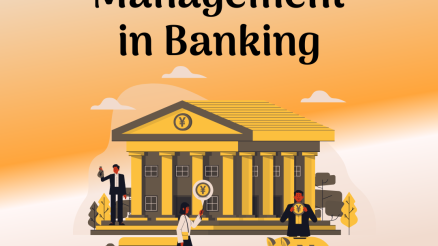Can you imagine a design process that thrives on creativity, innovation, and user-centric solutions?
How about a method that allows for limitless exploration of ideas and generates breakthrough concepts?
If these questions pique your interest, then you’re in the right place.
In the world of design thinking, ideation is the beating heart of the process, fueling the generation of fresh ideas and paving the way for groundbreaking designs.
In this blog post, we will dive into the fascinating realm of ideation methods in design thinking.
Whether you’re a designer, a problem solver, or simply curious about the creative process, join us as we explore various techniques and strategies that can unleash your creative potential and transform your design outcomes.
Get ready to unlock the power of ideation in design thinking!
Brief explanation of design thinking process and its stages
Design Thinking is a human-centered and iterative problem-solving approach that empowers individuals and teams to tackle complex challenges and create innovative solutions. Design Thinking typically consists of five stages, which are:
- Empathize: The first stage involves understanding the needs, motivations, and perspectives of the people who will use the design solution. Designers immerse themselves in the users’ world, conducting research, interviews, and observations to gain deep insights into their experiences and uncover unmet needs.
- Define: In this stage, designers analyze the research findings and synthesize the information to define the core problem or opportunity. They frame a clear and actionable problem statement that serves as a guiding beacon for the rest of the process. The goal is to reframe the challenge in a way that focuses on the users’ needs and aspirations.
- Ideate: Ideation is all about generating a wide range of creative ideas and potential solutions. Designers engage in brainstorming sessions, employ various ideation techniques, and encourage divergent thinking to explore multiple possibilities. The emphasis is on quantity and suspending judgment, allowing even the most unconventional ideas to emerge.
- Prototype: Prototyping involves bringing ideas to life in tangible forms. Designers create low-fidelity prototypes, such as sketches, wireframes, or mock-ups, to quickly test and iterate on their concepts. Prototypes serve as a means to gather feedback, learn from users’ reactions, and refine the design direction.
- Test: The final stage focuses on gathering feedback and evaluating the prototypes with the intended users. Designers conduct usability tests, interviews, and observations to understand how well the solutions meet users’ needs and expectations. The insights gained during testing inform further iterations, ensuring that the final design solution aligns with user requirements.
The Ideation Phase in Design Thinking
Ideation is the creative and generative phase in the design thinking process where designers and teams generate a multitude of ideas and potential solutions.
It involves brainstorming, exploring possibilities, and pushing the boundaries of conventional thinking. Ideation is a crucial stage because it fosters innovation, encourages out-of-the-box thinking, and sets the stage for breakthrough design concepts.
Divergent thinking plays a pivotal role in the ideation phase of design thinking. It is the ability to think expansively, explore various perspectives, and generate a diverse range of ideas.
Divergent thinking breaks free from linear and traditional thought patterns, allowing designers to uncover novel solutions and unexpected connections.
The ideation phase serves several essential goals within the design thinking process. Firstly, it aims to generate a large quantity of ideas, fostering a rich pool of potential solutions to the defined problem or opportunity. Quantity is prioritized over quality at this stage, as a large volume of ideas can lead to unexpected breakthroughs.
Secondly, the ideation phase aims to promote collaboration and co-creation, enabling diverse perspectives and expertise to converge in the ideation process. This collaboration fosters collective intelligence and enhances the quality of ideas generated.
Lastly, the ideation phase seeks to create an environment that encourages risk-taking and experimentation. It embraces a mindset that allows for wild ideas, unconventional approaches, and unexplored possibilities. This freedom of thinking is vital for innovative and transformative design solutions to emerge.
Ideation Methods in Design Thinking
1. Brainstorming
Traditional brainstorming is a well-known ideation method that involves a group of individuals coming together to generate a large number of ideas. It typically follows a few key principles: suspending judgment, encouraging wild and unconventional ideas, building upon each other’s suggestions, and striving for quantity over quality. The aim is to create a free-flowing and non-critical environment that fosters creativity and unlocks innovative ideas.
Guidelines for effective brainstorming sessions: To make brainstorming sessions more effective, it is essential to follow certain guidelines:
a. Set clear goals and establish a focus: Define the problem or challenge statement to guide the brainstorming session and keep participants on track.
b. Encourage active participation: Create a safe and inclusive space where everyone feels comfortable contributing ideas. Encourage equal participation and value all ideas.
c. Embrace diverse perspectives: Invite individuals from different backgrounds and expertise to bring unique viewpoints and ideas to the table. Diversity sparks creativity and leads to richer ideation.
d. Build on ideas: Encourage participants to build upon each other’s ideas. This collaborative approach can inspire new connections and more refined concepts.
e. Use visual aids or prompts: Incorporate visual aids, such as sketches, images, or prototypes, to stimulate imagination and inspire new ideas.
f. Set a time limit: Allocate a specific time frame for brainstorming to keep the energy and momentum high. Time constraints can help avoid overthinking and promote quick idea generation.
2. SCAMPER
SCAMPER is a powerful ideation method that provides a structured framework to stimulate innovation by prompting individuals to consider seven different actions: Substitute, Combine, Adapt, Modify, Put to another use, Eliminate, and Reverse. Each action encourages designers to approach the problem from a unique angle, helping them generate fresh ideas and uncover unique solutions.
a. Substitute: This component involves considering alternative options by replacing one element with another. It could be substituting materials, processes, or even roles. The goal is to explore different possibilities and assess the impact of the substitution on the solution.
b. Combine: Combining different elements, ideas, or concepts can often lead to innovative solutions. This component encourages designers to explore how existing elements can be merged or integrated to create something new and valuable.
c. Adapt: Adapting involves adjusting existing solutions or ideas to fit new contexts or requirements. It prompts designers to consider how they can modify and tailor their designs to better suit specific needs or address particular constraints.
d. Modify: Modification entails making changes or alterations to existing elements. It encourages designers to explore how they can improve, enhance, or optimize the design. By modifying various attributes, such as shape, size, color, or functionality, designers can push the boundaries of the solution and uncover new possibilities.
e. Put to another use: This component encourages designers to explore alternative applications or contexts for their ideas. It involves considering how the solution can be repurposed or utilized in a different domain or for a different target audience.
f. Eliminate: Sometimes, less is more. Eliminating unnecessary or redundant elements can streamline the design and make it more focused and efficient. This component prompts designers to identify elements or features that can be removed without compromising the core functionality or user experience. By eliminating clutter, designers can create more elegant and streamlined solutions.
g. Reverse: The reverse component encourages designers to reverse the usual order or perspective. It involves flipping assumptions, processes, or approaches to gain new insights and generate unconventional ideas.
3. Mind Mapping
Mind mapping is a visual brainstorming technique that helps individuals or teams organize and structure their thoughts around a central concept or problem. It involves creating a diagram that branches out from a central idea, connecting related concepts and ideas through lines and nodes.
The visual nature of mind maps allows designers to see the bigger picture, spot patterns, and explore connections between ideas that might not be apparent in a linear format.
Mind maps help structure and organize complex information, making it easier to navigate and comprehend. They provide a visual representation of the relationships between ideas, enabling designers to see the overall structure of their thoughts.
Creating a mind map for ideation involves the following steps:
a. Start with a central idea: Begin by identifying and placing the central theme or problem at the center of your mind map. This serves as the focal point from which all other ideas will branch out.
b. Generate main branches: Identify the main categories, themes, or aspects related to the central idea. These will form the primary branches radiating from the central concept. Capture these main branches as separate lines or nodes.
c. Expand with sub-branches: For each main branch, generate sub-branches that represent more specific ideas, concepts, or related elements. These sub-branches should connect to the respective main branches, forming a hierarchical structure.
d. Add keywords or images: Use keywords, short phrases, or even visual symbols to represent each idea or concept on the branches. Keep them concise and easily understandable to capture the essence of the idea.
e. Make connections: As you add ideas to the mind map, draw connections between related concepts or ideas using lines. This visually demonstrates the associations and relationships between different elements, allowing for further exploration and idea generation.
f. Expand and iterate: Continuously expand the mind map by adding more branches and sub-branches as new ideas emerge. Allow the mind map to evolve and grow, capturing a comprehensive web of interconnected ideas.
4. Rapid Prototyping
Rapid prototyping is a method used in the design process to quickly create tangible representations of ideas, concepts, or solutions. It involves constructing physical or digital prototypes with the goal of testing and validating design assumptions, gathering feedback, and refining ideas.
The purpose of rapid prototyping is to accelerate the iterative design process, reduce development time and costs, and improve the overall quality of the final product or solution.
How rapid prototyping aids ideation: Rapid prototyping plays a vital role in the ideation phase of design thinking by bringing ideas to life and making them tangible. It aids ideation in the following ways:
a. Visualization: Rapid prototypes provide a visual representation of ideas, allowing designers and stakeholders to better understand and visualize the proposed solution. It bridges the gap between abstract concepts and concrete manifestations, making it easier to evaluate and iterate on design ideas.
b. Feedback and validation: Prototypes enable designers to gather feedback from users, clients, or other stakeholders early in the design process. By obtaining real-world insights and reactions, designers can validate assumptions, identify potential improvements, and refine their ideas before investing significant resources into full-scale development.
c. Iteration and refinement: Rapid prototyping facilitates an iterative approach to design. By quickly creating and testing prototypes, designers can identify flaws, explore different design alternatives, and make improvements based on user feedback. This iterative cycle of prototyping and refinement helps designers evolve their ideas and generate more innovative solutions.
d. Communication and collaboration: Prototypes serve as a common language for communication between designers, stakeholders, and team members. They enable better collaboration and facilitate discussions around design decisions, allowing everyone involved to provide input and align their understanding of the solution.
5. Role Playing
Role playing is a technique used in the ideation phase of design thinking that involves participants assuming different roles or personas related to the design problem or solution.
It allows individuals to embody and explore different perspectives, experiences, and scenarios to generate insights and innovative ideas.
By immersing themselves in these roles, participants can gain a deeper understanding of user needs, motivations, and pain points, leading to more empathetic and user-centered design solutions.
Given below are the steps that need to be followed for role playing:
a. Clearly define roles and scenarios: Clearly communicate the roles, objectives, and scenarios to participants. Ensure they understand the context and motivations of the personas they are assuming.
b. Provide guidance and prompts: Offer participants guidance and prompts to help them immerse themselves in their assigned roles. Provide them with relevant information, backstory, or specific goals to guide their interactions and decision-making.
c. Encourage active participation: Create a safe and inclusive environment that encourages active participation. Foster an atmosphere where participants feel comfortable embodying their roles, expressing their thoughts, and exploring different perspectives.
d. Capture insights and observations: Assign someone to observe and document the role playing session. Capture important insights, user behaviors, pain points, and any innovative ideas that emerge during the session. These observations will inform further ideation and refinement.
e. Allow for reflection and discussion: Provide time for participants to reflect on their experiences and discuss their insights and ideas. Encourage open dialogue, active listening, and the sharing of diverse perspectives. This reflection and discussion phase can spark further ideation and uncover new insights.
f. Iterate and refine: Use the learnings from the role playing session to iterate and refine the design concepts. Incorporate the identified pain points, opportunities, and user insights into the design solutions, and continue the iterative design process.
6. Analogous Inspiration
Analogous inspiration, also known as analogical thinking, is a method used in design thinking to draw inspiration and insights from diverse fields, industries, or domains outside of the immediate problem space.
It involves identifying similarities or shared principles between unrelated concepts and leveraging those connections to generate innovative design ideas and solutions.
Analogous inspiration allows designers to think beyond traditional boundaries, discover fresh perspectives, and apply successful strategies or approaches from other domains to their design challenges.
To find and draw inspiration from diverse fields and industries, designers can follow these steps:
a. Explore different domains: Actively seek out knowledge and experiences from fields beyond your own. Read books, attend conferences, engage in interdisciplinary collaborations, and explore industries unrelated to your own. This broad exposure helps expand your mental database of ideas and solutions.
b. Identify analogous elements: Look for similarities or shared principles between your design challenge and other domains. This could involve examining underlying concepts, processes, functions, materials, user interactions, or problem-solving approaches. Seek out connections that can be applied to your own design context.
c. Translate and adapt: Once you’ve identified analogous elements, translate and adapt them to fit your design challenge. Consider how the principles or strategies from the other domain can be transferred and integrated into your own design solution. This may involve making necessary adjustments and modifications to align with the specific context.
d. Extract key insights: Extract the key insights or principles from the analogous inspiration. Identify the core ideas that make the approach or solution successful in the other domain. These insights will serve as a foundation for generating innovative design concepts that address your specific challenge.
e. Combine with your expertise: Blend the analogous inspiration with your own expertise and domain knowledge. This synthesis of ideas from different fields, combined with your expertise, can lead to unique and innovative design solutions that have the potential to disrupt existing paradigms.
Choosing the Right Ideation Methods
A. Considerations for selecting ideation methods: When selecting ideation methods for a design challenge, it is important to consider the following factors:
- Problem complexity: Assess the complexity of the design challenge. Some challenges may require more structured methods like SCAMPER or mind mapping to break down and analyze the problem, while others may benefit from more open-ended methods like brainstorming to encourage free-flowing creativity.
- Team dynamics: Take into account the size and composition of the design team. Different methods may be more suitable for smaller or larger teams. Consider the level of expertise and diversity of perspectives within the team, as this can influence the effectiveness of certain ideation methods.
- Time constraints: Evaluate the available time for ideation. Some methods, such as rapid prototyping or role playing, may require more time and resources, while others, like brainstorming or SCAMPER, can be conducted relatively quickly. Choose methods that align with the available time frame without sacrificing the quality of ideation.
- Desired outcomes: Clarify the desired outcomes of the ideation phase. Are you looking for a large quantity of ideas, or are you seeking to refine and develop a few promising concepts? Different methods have varying strengths in generating a wide range of ideas or honing in on specific solutions. Align the method with the desired outcome.
Final words
In the world of design thinking, ideation is a crucial phase that fuels creativity, innovation, and problem-solving. By employing various ideation methods, designers can unlock new possibilities, challenge assumptions, and generate groundbreaking ideas. Whether it’s brainstorming, SCAMPER, mind mapping, rapid prototyping, role playing, or analogous inspiration, each method brings its unique strengths to the ideation process.
Ultimately, ideation is a journey of exploration and discovery. It requires an open mind, a willingness to step outside of familiar boundaries, and a commitment to understanding and empathizing with users. By embracing ideation methods in design thinking, designers can pave the way for innovative solutions that truly make a difference in the lives of users.
So, unleash your creativity, experiment with different ideation methods, and let your ideas soar to new heights. Happy ideating!



